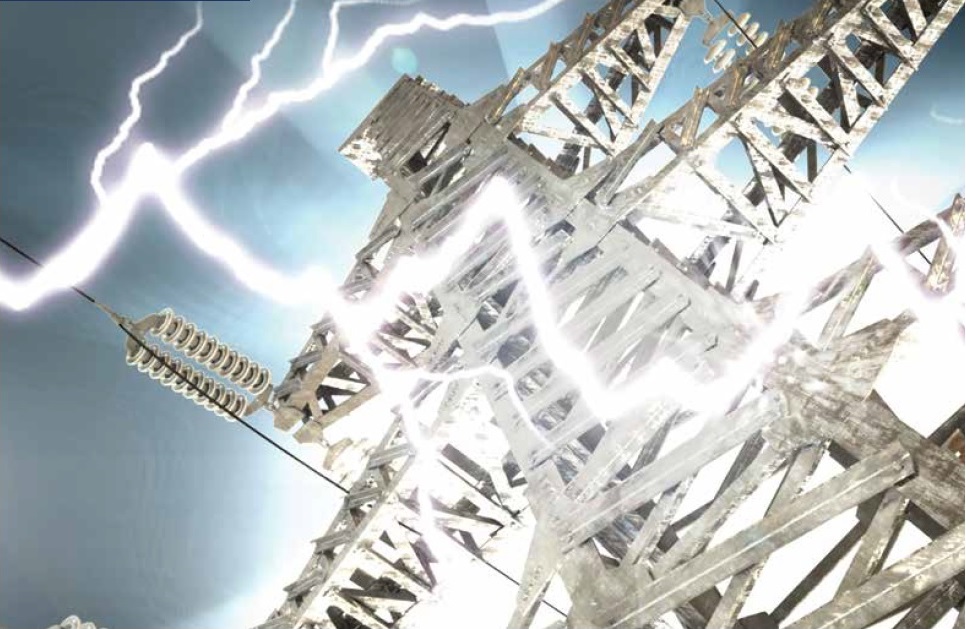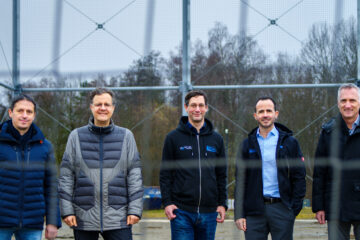
Power Line Communication (PLC) uses electricity cables to transmit data. Andrea M. Tonello, professor at the Institute of Networked and Embedded Systems, was interviewed by Katharina Tischler-Banfield. He tells us whether PLC represents the future of the Internet and whether it will revolutionise the transmission of data.
The greatest advantage of Power Line Communication is soon explained: Electricity grids and power lines are pretty much ubiquitous. Using them to transport data avoids the need to install additional data transmission cables. It is, therefore, not truly surprising that PLC is already a widely used technology across the globe. “According to market penetration surveys, home networks are currently the primary area of application for PLC, because it facilitates high speed networks within buildings”, Andrea Tonello explains.
Intelligent measuring instruments
Tonello believes that a further, still emergent area of PLC application can be found in Smart Metering, which measures the electricity consumption accompanied by a simultaneous data transmission, both to the network operator and to the consumer. “By 2020, 240 million Smart Meters – intelligent electricity meters – should be implemented in Europe, and 150 million in North America. Additionally, we expect to see a drastically rising number of intelligent water and gas meters. PLC is set to play an increasingly important role”, according to Andrea Tonello. The pioneer in terms of the European Smart Meter sector is Italy. A technically and economically compelling model has been developed there, which demonstrates the many advantages of automatic meter reading statements and subsequent billing, of continuous monitoring of household energy consumption levels and of the associated possibility of implementing dynamic tariff plans to encourage a more efficient use of energy throughout the day.
Thanks to PLC, it is possible to collect vast quantities of data from electricity meters and sensors, for the subsequent exchange with analysis and processing centres. This, in turn, as Tonello tells us, results in more effective control and proactive maintenance, greater security and efficiency, improved planning and implementation, as well as higher levels of customer satisfaction. Through PLC, contact can be established with sensors in substations, allowing the system status of the electricity grid to be monitored, which leads to faster fault recognition and, if required, isolation.
Internet from the power socket?
Along with PLC technology, the newly coined concept of “Internet from the power socket” has emerged. However, connecting consumer households to the servers of Internet providers using power cables is not a promising market. Tonello: “The provision of Internet access by PLC is not expected to find significant application, as the market is already dominated by three other technologies: Digital Subscriber Line (DSL), cellular, and fibre optics. PLC will, however, have an important role to play in the networked world, the so-called Internet of Things (IoT), where the exchange of data between devices, objects and people will lead to new intelligent services.” As Tonello further points out, because it is inexpensive, Internet access via PLC could prove to be successful in developing countries or regions lacking a telecommunications infrastructure.
Diverse application opportunities for PLC
Andrea Tonello anticipates that there will be many future application opportunities for the PLC technology: combining home and building networks, industrial sensor networks and Smart Grids, networks in smart cities, for example to control street lighting and to record sensor data for the purpose of monitoring traffic, people, weather, air quality, and the like. But PLC also offers potential for applications in vehicles, though more research and the joint effort of the automotive industry and of PLC experts will be necessary here in order to develop a technically mature and affordable solution.
In the laboratory for Embedded Communication Systems at the AAU, Andrea Tonello and his team conduct numerous tests and develop prototypes. “A lot of research is happening in the area of PLC. After all, there are still many unanswered questions, for example with regard to algorithms to filter out interference or noise, or the design of innovative electronic devices to inject and extract PLC signals.” The deployment of PLC to transmit sensor data is of particular interest to Tonello’s research team. “Together with my team I am working on new methods to reconstruct and map the network topology. In the future, we hope to use existing PLC modems to diagnose disruptions in the electricity grid and to identify possible sites of cable damage. I would label this new research area ‘PLC for sensing and diagnostics’. Even though we have been able to shed new light onto this research area, much still remains to be done.”
About the person
 Andrea M. Tonello is professor for embedded communication systems at the Institute of Networked and Embedded Systems at the AAU. His research interests are focused particularly in the area of Wireless and Power Line Communication, Smart Transportation and Smart Grids. He currently chairs the IEEE Technical Committee on Power Line Communications. He studied Electrical Engineering at the University of Padova, where he completed his doctoral studies in Telecommunication Engineering in 2002. He received the “Italian Full Professor Habilitation” in the year 2013.
Andrea M. Tonello is professor for embedded communication systems at the Institute of Networked and Embedded Systems at the AAU. His research interests are focused particularly in the area of Wireless and Power Line Communication, Smart Transportation and Smart Grids. He currently chairs the IEEE Technical Committee on Power Line Communications. He studied Electrical Engineering at the University of Padova, where he completed his doctoral studies in Telecommunication Engineering in 2002. He received the “Italian Full Professor Habilitation” in the year 2013.
This article by Katharina Tischler-Banfield was originally published in ad astra. It is also available in German language: “Von Stromleitungen, die Daten transportieren“.




